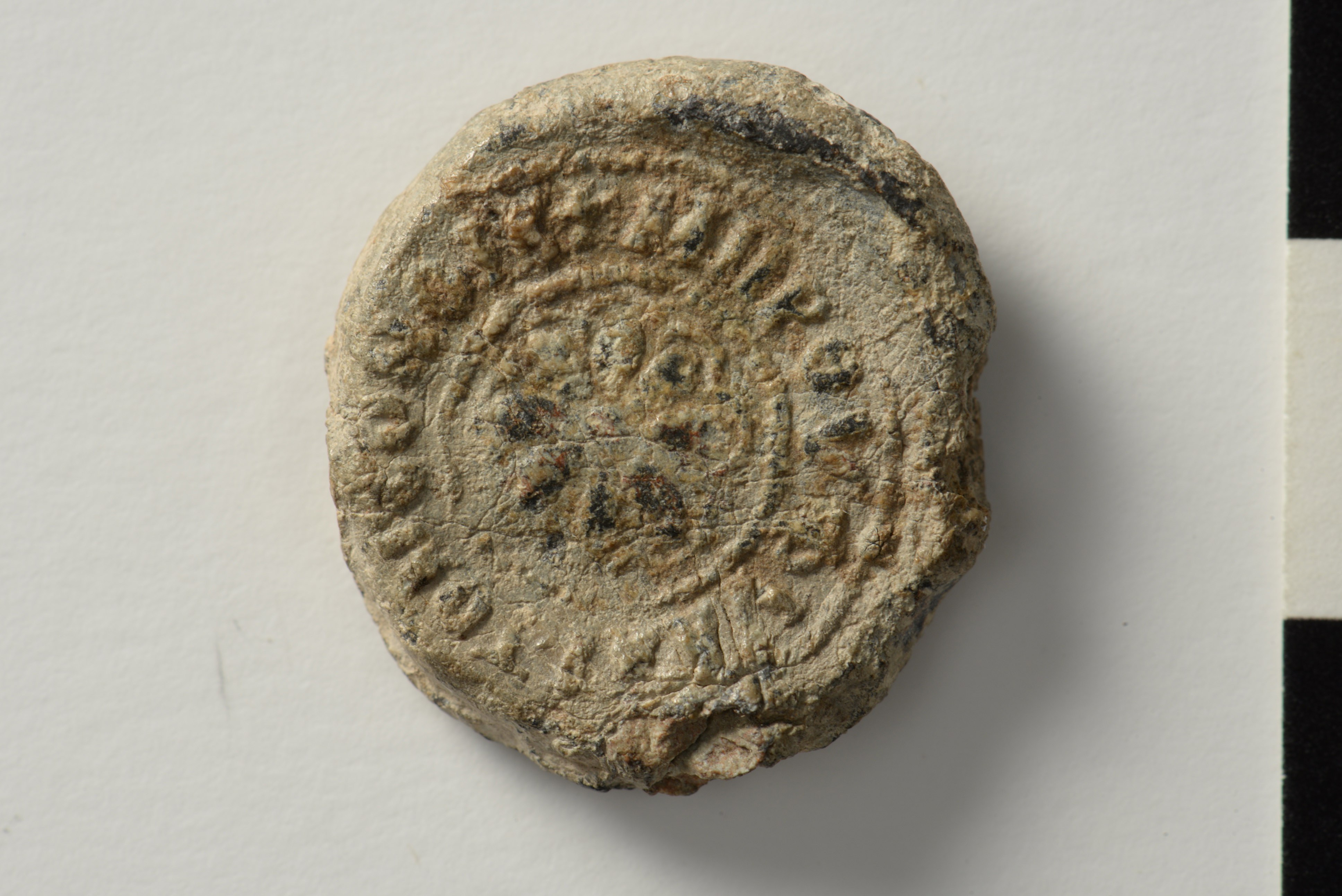Epiphanios archon of Demetrias (tenth century)
Obverse
A rosace. Circular inscription between two borders of dots.
ΜΗΡΘΥΦΥΛΑΤ,ΤΟΝΣΟΝΟΙΚ,
Μῆ(τε)ρ Θ(εο)ῦ φύλατ(τε) τὸν σὸν οἰκ(έτην)
Obverse
A rosace. Circular inscription between two borders of dots.
ΜΗΡΘΥΦΥΛΑΤ,ΤΟΝΣΟΝΟΙΚ,
Μῆ(τε)ρ Θ(εο)ῦ φύλατ(τε) τὸν σὸν οἰκ(έτην)
Reverse
Inscription of five lines. Border of dots.
ΕΠΙΦ
ΑΝΙΑΡ
ΧΟΝΤΙΔ
ΗΜΗΤΡ
ΙΑΔΟΣ
Ἐπιφανίῳ ἄρχοντι Δημητριάδος
| Accession number | BZS.1951.31.5.1504 |
|---|---|
| Diameter | 19.0 mm; field: 15.0 mm |
| Previous Editions | DO Seals 2, no. 12.1. See also Wassiliou-Seibt, Siegel mit metrischen Legenden I, no. 1437. |
| Credit Line | Harvard Art Museums/Arthur M. Sackler Museum, Bequest of Thomas Whittemore. |
Translation
Μῆτερ Θεοῦ φύλαττε τὸν σὸν οἰκέτην Ἐπιφανίῳ ἄρχοντι Δημητριάδος.
Mother of God, protect your servant Epiphanios, archon of Demetrias.
Bibliography
- Catalogue of the Byzantine Seals at Dumbarton Oaks and at the Fogg Museum of Art, Vol. 2: South of the Balkans, the Islands, South of Asia Minor (Open in Zotero)
- Hellas und Thessalia (Open in Zotero)
- Le Corpus des sceaux de l’empire byzantin (Open in Zotero)
- Sceaux byzantins du Musée National de Varsovie (Open in Zotero)
- Hierarchia Ecclesiastica Orientalis: Series episcoporum ecclesiarum christianarum orientalium (Open in Zotero)
- Corpus der byzantinischen Siegel mit metrischen Legenden, Vol. 1, Siegellegenden von Alpha bis inclusive My (Open in Zotero)

Commentary
The formulaic invocation on the obverse forms a dodecasyllabic verse; if not accidental, it would be an early example of a metrical inscription. The grammatically incompatible reverse inscription, giving the owner's name and office in the dative case, appears to have been grafted on to the invocation.
The modern Demetrias, 2 km to the southwest of and opposite Volos. Important port of the Pagasetikos, attested throughout the Middle Ages, repeatedly sacked by the Arabs and the Bulgarians in the 10th-11th centuries. It had its own administration, an archon, and was the seat of a bishop, suffragan of Larissa, first mentioned in the 5th century. The presence of an archon at Demetrias may be related to the importance of this city as a port. An archon is also attested in Athens (see DO Seals 2, no. 9.1). See also Koder-Hild, Hellas, 144-45; Laurent, Corpus V/1, 511; Szemioth-Wasilewski, no. 71; Fedalto, 461-63.